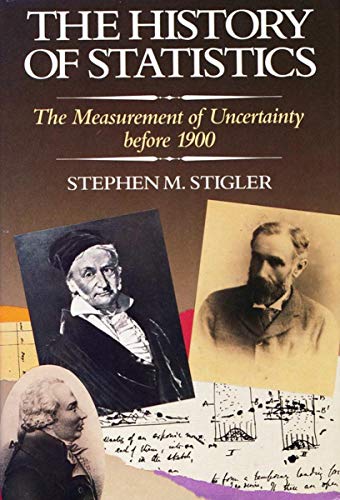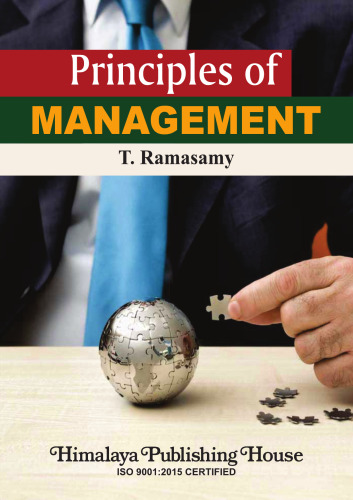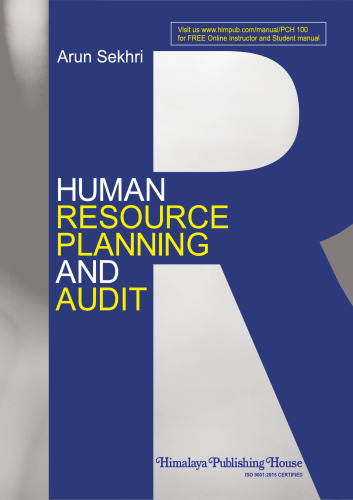This magnificent book is the first comprehensive history of statistics from its beginnings around 1700 to its emergence as a distinct and mature discipline around 1900. Stephen M. Stigler shows how statistics arose from the interplay of mathematical concepts and the needs of several applied sciences including astronomy, geodesy, experimental psychology, genetics, and sociology. He addresses many intriguing questions: How did scientists learn to combine measurements made under different conditions? And how were they led to use probability theory to measure the accuracy of the result? Why were statistical methods used successfully in astronomy long before they began to play a significant role in the social sciences? How could the introduction of least squares predate the discovery of regression by more than eighty years? On what grounds can the major works of men such as Bernoulli, De Moivre, Bayes, Quetelet, and Lexis be considered partial failures, while those of Laplace, Galton, Edgeworth, Pearson, and Yule are counted as successes? How did Galton’s probability machine (the quincunx) provide him with the key to the major advance of the last half of the nineteenth century?
Stigler’s emphasis is upon how, when, and where the methods of probability theory were developed for measuring uncertainty in experimental and observational science, for reducing uncertainty, and as a conceptual framework for quantitative studies in the social sciences. He describes with care the scientific context in which the different methods evolved and identifies the problems (conceptual or mathematical) that retarded the growth of mathematical statistics and the conceptual developments that permitted major breakthroughs.
Statisticians, historians of science, and social and behavioral scientists will gain from this book a deeper understanding of the use of statistical methods and a better grasp of the promise and limitations of such techniques. The product of ten years of research, The History of Statistics will appeal to all who are interested in the humanistic study of science.
چکیده فارسی
این کتاب باشکوه اولین تاریخ جامع آمار از آغاز آن در حدود سال 1700 تا ظهور آن به عنوان یک رشته متمایز و بالغ در حدود سال 1900 است. استیون ام استیگلر نشان میدهد که چگونه آمار از تعامل بین ریاضیات به وجود آمده است. مفاهیم و نیازهای چندین علم کاربردی از جمله نجوم، ژئودزی، روانشناسی تجربی، ژنتیک و جامعه شناسی. او به سؤالات جالب بسیاری می پردازد: چگونه دانشمندان یاد گرفتند که اندازه گیری های انجام شده در شرایط مختلف را ترکیب کنند؟ و چگونه آنها را به استفاده از نظریه احتمال برای اندازه گیری دقت نتیجه سوق دادند؟ چرا روش های آماری مدت ها قبل از اینکه شروع به ایفای نقش مهمی در علوم اجتماعی کنند با موفقیت در نجوم مورد استفاده قرار گرفتند؟ چگونه ممکن است معرفی حداقل مربعات بیش از هشتاد سال قبل از کشف رگرسیون باشد؟ بر اساس چه دلایلی میتوان آثار بزرگ مردانی مانند برنولی، دو مویور، بیز، کوتله و لکسیس را شکستهای نسبی در نظر گرفت، در حالی که آثار لاپلاس، گالتون، اجورث، پیرسون و یول را موفقیتآمیز دانست؟ چگونه ماشین احتمال گالتون (کونکانکس) کلید پیشرفت عمده نیمه آخر قرن نوزدهم را در اختیار او قرار داد؟
تاکید استیگلر بر چگونگی، زمان و مکان روشهای نظریه احتمال برای اندازهگیری عدم قطعیت در علوم تجربی و مشاهدهای، برای کاهش عدم قطعیت، و به عنوان چارچوبی مفهومی برای مطالعات کمی در علوم اجتماعی است. او با دقت زمینه علمی را که در آن روشهای مختلف تکامل یافتهاند، توصیف میکند و مشکلات (مفهومی یا ریاضی) را که رشد آمار ریاضی و تحولات مفهومی را که امکان پیشرفتهای بزرگ را به تاخیر میاندازد، شناسایی میکند.
آماردانان، مورخان علم و دانشمندان علوم اجتماعی و رفتاری از این کتاب درک عمیقتری از استفاده از روشهای آماری و درک بهتر وعدهها و محدودیتهای چنین تکنیکهایی به دست خواهند آورد. محصول ده سال تحقیق، تاریخ آمار برای همه کسانی که علاقه مند به مطالعه انسان گرایانه علم هستند، جذاب خواهد بود.
ادامه ...
بستن ...
- ISBN-10 : 0674403401
- ISBN-13 : 978-0674403406
ادامه ...
بستن ...




![Our mission to the court of Marocco [Morocco] in 1880, under Sir John Drummond Hay - pdf Our mission to the court of Marocco [Morocco] in 1880, under Sir John Drummond Hay - pdf](https://dl.libsan.ir/images/1/12/112108724_694b9e9769312.jpg)





